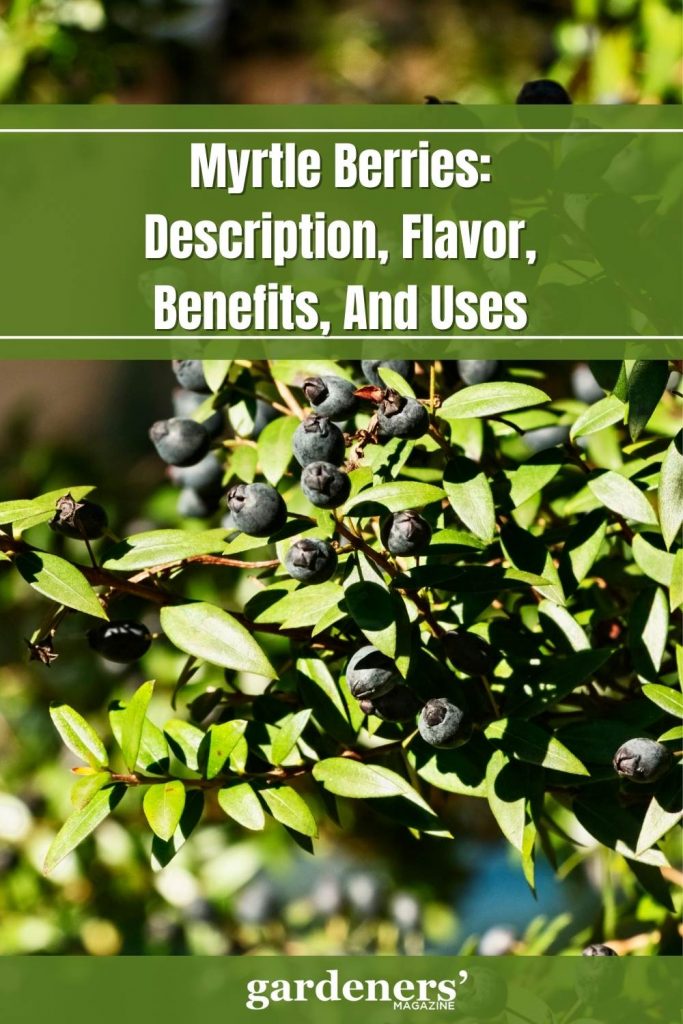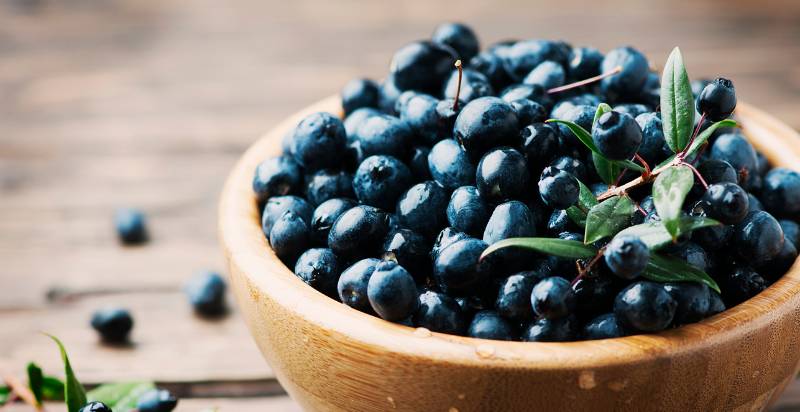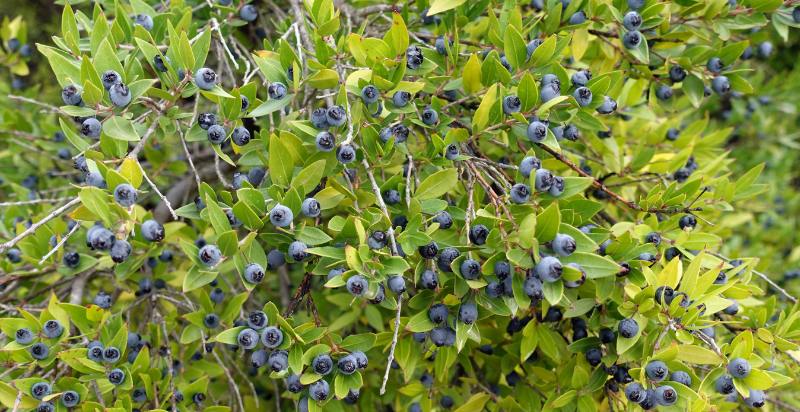Myrtle berries (or Myrtus communis) are small, dark-blue fruits used for centuries as medicinal plants and culinary ingredients. Native to the Mediterranean region, myrtle berries have a sweet and slightly tart flavor and can be fresh or dried in most grocery stores.
Traditionally, the leaves of the myrtle plant were used to make tea and wines, while berries were added to dishes for flavor. Here is everything you need to know about myrtle berries, including their health benefits, nutritional information, and how to use them in cooking.
What are Myrtle Berries, and why are they so popular?
Myrtle berries are small, dark-blue fruits that grow on the myrtle bush (Myrtus communis), an evergreen shrub native to the Mediterranean region. The plant has been used in traditional medicine since ancient times and in culinary applications. It is also widely cultivated for its attractive foliage and fragrant flowers. The berries are often described as having a sweet, slightly tart flavor and can be used fresh or dried in recipes.
There are wide variety of berries available in market like Cranberries, Blueberries, Blackberries, Currants, Raspberries.

History and Origin of the Myrtle Berries:
Myrtle berries have been used since ancient times, both as a medicinal plant and as a culinary ingredient. In Ancient Greece and Rome, myrtle was believed to be sacred to Aphrodite, the goddess of love, beauty, and fertility. It was grown in gardens and used as an herbal remedy for various health conditions.
In the Middle Ages, myrtle berries were added to dishes for flavor. Today, they remain popular as an ingredient in Mediterranean cuisine and a natural remedy for health issues such as sore throats, asthma, and sinus infections.
Nutritional Information & Health Benefits of Myrtle Berries:
Myrtle berries are an excellent source of fiber, vitamin C, manganese, and other important nutrients like calcium and iron. They are also rich in antioxidants, which may help protect against disease and reduce inflammation. Additionally, myrtle berries contain a plant compound called quercetin, which has been linked to anti-cancer properties.
Where are Myrtle Berries Grown and Harvested?
Myrtle berries are native to the Mediterranean region and have been grown and harvested for centuries. Today, they can be found in most grocery stores, either fresh or dried. They grow best in warm climates with lots of sunshine and moist soil, though they can also tolerate some light shade.

Flavor profile of the Myrtle Berries:
Myrtle berries have a sweet, slightly tart flavor with hints of citrus and licorice. Their taste is similar to blueberries or currants, though it is much more subtle.
Where to find the best quality Myrtle Berries?
The best quality myrtle berries can be found in specialty grocery stores, either fresh or dried. It is important to look for dark blue berries free from blemishes or bruises. Additionally, you may find the plant growing wild in some parts of the Mediterranean region.
How to Store Myrtle Berries?
Fresh myrtle berries should be stored in an airtight container in the refrigerator. Dried berries can be kept at room temperature for up to a year. When using dried berries, it is best to rehydrate them first by soaking them in hot water for 10 minutes before adding them to recipes.
How to Pick Myrtle Berries?
Myrtle berries should be picked when dark blue and free from blemishes or bruises. It is important to pick the berries gently, as they will easily bruise if handled too roughly. Additionally, it is best to avoid picking over-ripe berries, as they may have a different flavor and texture than fresh, ripe ones.

Using Myrtle Berries in Cooking:
Myrtle berries are often used in Mediterranean cuisine as an ingredient in dishes such as couscous, salads, and sauces. They can also be added to desserts or baked goods for extra flavor. Additionally, the leaves of the myrtle plant are used to make tea and wine.
Myrtle Berry Recipes:
Myrtle berries can be used in various recipes, both savory and sweet. Some popular options include:
- Myrtle berry compote served over Greek yogurt or ice cream
- Couscous salad with feta cheese and myrtle berries
- Grilled salmon with a myrtle berry glaze
- Roasted chicken and potatoes with myrtle berries
- Myrtle berry and almond muffins
- Lemon meringue tart with myrtle berry sauce
- Myrtle berry jam or jelly.
Many potential health benefits are associated with myrtle berries, including improved digestion, reduced inflammation, and protection against disease. Additionally, they can be used in various recipes to add flavor and texture to sweet and savory dishes. Therefore, it is worth adding this tasty berry to your diet!
- Everything You Wanted to Know About Red Tamarillos - June 2, 2025
- A Guide to Tulips: Everything You Need to Know & More… - June 2, 2025
- Guanabana: Description, Flavor, Benefits, And Uses - May 27, 2025

1 thought on “Myrtle Berries: Description, Flavor, Benefits, And Uses”
Comments are closed.